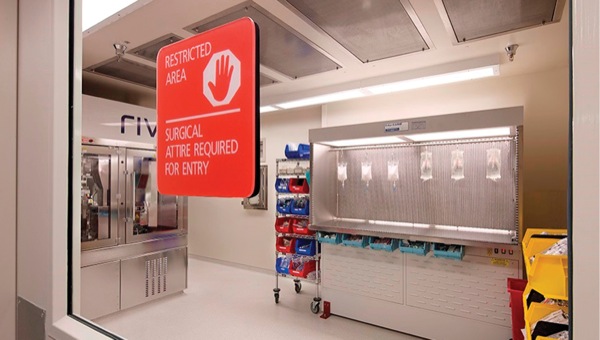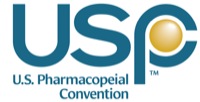With the U.S. Pharmacopeial Convention (USP) General Chapter <800> launch date less than a year away, USP reset the start button to Dec. 1, 2019, stating it needs more time to align the official date of the hazardous drug handling measure with the anticipated official date of the next revision of Chapter <797>.
The new official date added 17 months to Chapter <800>’s previous compliance deadline, but compounding safety experts cautioned against viewing the postponement as a chance to delay the facility and workflow upgrades needed to meet the safe handling standards.
“While some groups may see this as an opportunity to put all construction projects on hold for any number of reasons, we do not share that approach and strongly urge pharmacy and hospital administrations that they do not stop what they have started,” said Eric Kastango, MBA, RPh, FASHP, the CEO of Clinical IQ, writing in his consulting firm’s newsletter.
Luci A. Power, MS, RPh, the CEO of Power Enterprises, in San Francisco, agreed. “Work practices to protect health care workers from occupational exposure to these toxic agents must be implemented as soon as possible,” she said, “because it is the right thing to do.”
Since its 2014 publication as a draft for public comment, USP <800> has raised significant cost and facility space challenges for many compounding facilities. Also, pharmacy organizations have pressed USP to allow compounders more leeway to comply.
Anna Legreid Dopp, PharmD, the director of clinical guidelines and quality improvement for ASHP, said the association has been “consistent in asking USP and other enforcing bodies to allow adequate time for implementation due to the challenges health care settings will encounter while coming into compliance,” adding that USP’s latest postponement was “consistent with the time needed to make necessary changes in workflows, education of personnel and procurement of supplies and equipment.”
Dr. Legreid Dopp stressed, however, that the delay in implementation “doesn’t change our position” on the need for “health care organizations and partners throughout the medication supply chain to adhere to standards and regulations that protect workers from undue exposure to hazardous medications.”
A Conversation With USP
PPN: Can you elaborate on what is meant by providing “a unified approach to quality compounding?”
USP: The intent of postponing the official date is to ensure that <800> and <797> are aligned. General Chapter <800> applies to handling of all hazardous drugs, and if that includes sterile compounding, General Chapter <797> also would apply. Because both chapters reference each other in various areas, both standards must be adhered to in order to prepare a quality sterile preparation.
PPN: What prompted this intention to revise the start date?
USP: As many are aware, a revision to <797> was proposed for public comment from Sept. 25, 2015, to Jan. 31, 2016. Based on the nature and significance of the public comments received, the chapter is currently being revised and will be republished for another round of public comment. It is anticipated that the chapter will be published in the Pharmacopeial Forum (September/October 2018;44[5]) for a second round of public comment. The intention to revise the official date of <800> is to align both chapters.
PPN: Some have expressed disappointment at the delay, saying it may put more health care workers at risk for hazardous drug exposure. How would you respond?
USP: USP encourages early adoption and implementation of USP <800> to protect the public health in all health care settings. To facilitate and promote adoption and to support efforts that help reduce the risks hazardous drugs may pose to health care workers, USP is offering a number of resources, including free access to USP General Chapter <800>, and we will continue to support our stakeholders through ongoing education and outreach.
She also commended USP on its plans “to bolster awareness campaigns and educational efforts in 2018. We are committed to doing the same with ASHP members so that compliance is achieved by the new release date.”
Although the work needed to comply with USP <797> and <800> has proven difficult for some organizations, unifying the two chapters should not be complicated. In an email response to Pharmacy Practice News, USP listed several measures it proposes to change. One would remove the <797> section titled “Hazardous Drugs as CSPs (Compounded Sterile Preparations)” and replace it with a reference to Chapter <800>.
Also slated for change is the provision in Chapter <797> that permits facilities preparing a low volume of hazardous drugs to prepare them in a non–negative pressure room if two tiers of containment are used. Chapter <800> eliminates this allowance and requires compounding in a negative pressure containment secondary engineering control (C-SEC). For sterile compounding, the C-SEC may be either an unclassified containment segregated compounding area or an International Organization for Standardization (ISO) Class 7 buffer room with an ISO Class 7 anteroom. Additionally, USP stated that it “encourages early adoption and implementation of General Chapter <800> to help ensure a safe environment and protection of health care practitioners and others when handling hazardous drugs.”
Ms. Power noted that many of the practices in USP <800> “can be implemented immediately. In fact, most should already be in place.” For example, she pointed out that the Occupational Safety and Health Administration’s Hazard Communication Standard, revised in 2012, also applies to hazardous drugs. Moreover, she said, the 2004 National Institute for Occupational Safety and Health (NIOSH) Alert, “Preventing Occupational Exposures to Antineoplastic and Other Hazardous Drugs in Health Care Settings,” covers most of the work practices described in USP <800>, and USP <797> addresses hazardous drug handling in the 2008 revision.
She also said “many state boards of pharmacy already address compounding of chemotherapy and other hazardous drugs in their regulations.”
Still, some compounding pharmacies continue to put off facility upgrades. “Over the past few years, we have seen facilities that are so bad that all sterile compounding, including and especially hazardous drugs, should stop until changes are implemented,” Mr. Kastango said. “If your facility is bad enough today that you need renovations, it would be irresponsible to wait until December 2019 and continue to put everyone at risk.”
Read our review article on safe handling here.
Ms. Power reported relationships with BD, Corvida Medical, Equashield and ICU Medical. She is an unpaid member of the USP Compounding with Hazardous Drugs Expert Panel but does not represent USP. Mr. Kastango served on the USP Sterile Compounding Committee from 2005 to 2010 and the 2010-2015 USP Council of Experts, Compounding Expert Committee until April 2013.



